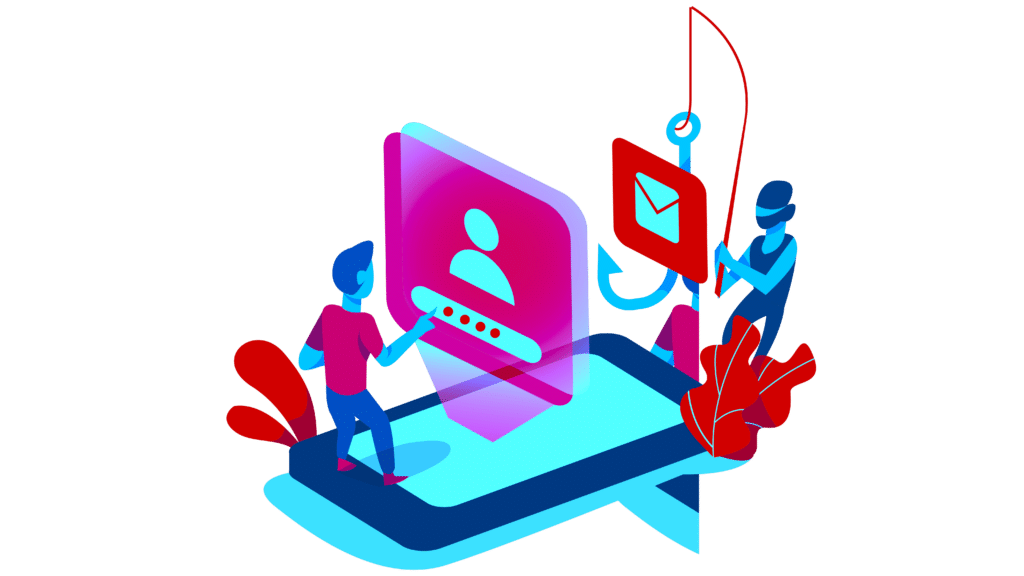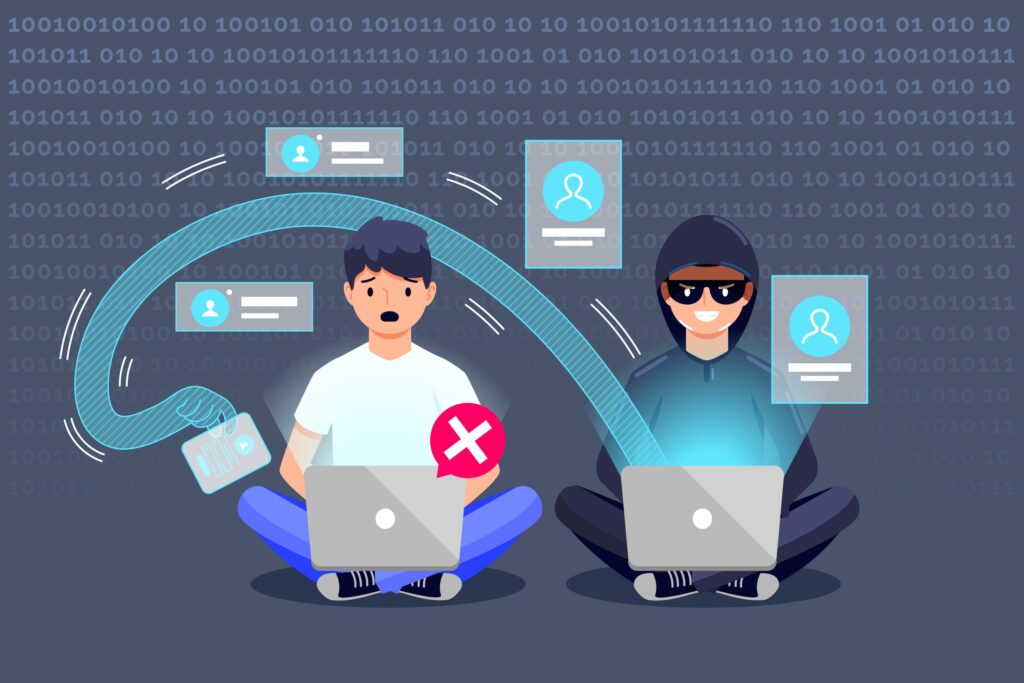Identity theft is a growing concern in today’s digital age. As personal information is increasingly shared online, it becomes easier for criminals to steal identities and use them for fraudulent activities. Digital identity is used to identify individuals in virtual environments and validate their legitimacy in the real world. With the emergence of digital identity, our way of demonstrating and understanding identity is also changing in today’s ever-connected society.
But what exactly is identity theft?
Identity theft has lasted as long as individuals have kept personal data. It is the unauthorized use of another person’s financial or personal information for any kind of benefit. This implies that thieves may steal personal information such as names, birthdates, Social Security numbers, addresses, and credit card or bank account details.
An identity thief can obtain your personal information using various methods, such as overhearing you reading out your credit card number over the phone, buying your information on the dark web after a data breach, or stealing it through other means. Here are some examples of how identity theft might occur:
Phishing

Fraudsters send fake emails or SMS that appear to be genuine. These emails or messages may contain a link that can be utilized to install malware or dangerous software.
For example, a malicious actor may send an email disguised as a legitimate organization or company, attempting to entice the recipient to click on a malicious link or provide their personal information. It may also be seen in the form of pop-up ads that promise something of value, or even on a website that looks legitimate but is hosting malicious code. Once the user enters their personal information, the malicious actor can access the user’s accounts, steal their identity, and possibly commit financial fraud. The malicious actor may also be able to access the user’s emails, contacts, and other private data.
A data breach is when confidential information is accessed or stolen by an unauthorized individual or entity, often resulting in unauthorized disclosure, corruption, deletion, modification, or leakage of sensitive information.
One example of identity theft that involves a data breach is when hackers gain access to customer databases held by large organizations. Hackers can then use the stolen information to open bank accounts, take out loans, and make purchases in the victim’s name. They may also use the information to access the victim’s other accounts, such as social media, emails, and other secure accounts. Victims of this kind of identity theft can suffer long-term consequences, such as poor credit ratings and higher insurance premiums.
Data Breaches

Malware

Malware is malicious software that is designed to damage or disrupt computer systems. It is often used to gain access to confidential data or to take control of a system without the user’s knowledge or permission.
Keylogger is a type of malware that is designed to record keystrokes, potentially allowing attackers to gain access to passwords and other sensitive personal information. This type of attack has been used to steal financial information, commit fraud, and even take out loans in a victim’s name. A keylogger can be installed by opening malicious emails, downloading malicious files, or clicking on malicious links.
Identity theft is popular because of its ease to commit and can be lucrative for fraudsters. The criminal can take your assets once the identity theft has occurred, sell them on the dark web, or even disguise them as you to get multiple benefits.
Here are some common types of identity theft:
Financial Identity theft – Financial identity theft occurs when one individual uses another individual’s private information for financial gain. The most popular type of identity theft. The great thing is that by reviewing your savings accounts, credit card receipts, and invoices, you can easily safeguard yourself against financial identity theft. Call your bank or credit card company right away to report any unauthorized charges you notice.
Medical Identity theft – This may not appear to be a legitimate form of identity theft, yet it does occur. Medical identity theft occurs when a thief impersonates another individual to receive healthcare services. As a result, you may get bills for medications, services, or equipment that you did not require, request, or receive.
Criminal Identity theft – Criminal identity theft happens when an individual is detained and uses another’s identity rather than just their own. They might be able to get away with it by making a false ID or utilizing a stolen ID, such as your driver’s license, to show the authorities.
Synthetic Identity theft – Synthetic identity theft is one of the world’s fastest-growing forms of financial cybercrime, including the creation of false identities using real people’s data. Fraudsters may use genuine people’s birthdates, residences, and Social Security numbers to establish fake profiles. They can then use this identity to obtain loans or credit cards and commit other significant frauds.
Child Identity Theft – Using a child’s details to create a brand-new account or credit line in their name is referred to as child identity theft. The thief might even seek a driver’s license, government assistance, or a mortgage using the child’s identity. Targeting children is frequently more straightforward than doing so with adults because most children have clean credit histories and financial records.
Hackers are constantly evolving and developing more sophisticated ways of stealing users’ PII and other data, but being aware of the warning signs will help you catch it beforehand and act swiftly. To prevent identity theft, an individual may always take some simple and important precautions such as:
- Enabling two-factor authentication on devices and accounts
- Collecting mails/letters regularly
- Securing your documents by encrypting them with a password
- Keeping your devices locked with a password when not in use
- Being alert and not getting pulled in by phishing scams. If you have already been a victim, take appropriate actions to mitigate the harm, such as reporting and auditing the theft.

According to the FTC, one of the most frequent complaints filed is identity theft. Data breaches have stolen millions of people’s personal information in recent years. That implies that sensitive information might be offered for sale on the dark web. Even if you take precautions to assist in safeguarding your sensitive data, a data breach could still result in its exposure. Your financial data is not the exclusive target of identity theft, your medical information may be sought after by criminals who will use it to perform medical identity theft and obtain medical services using your insurance information.
It is important to stay vigilant and take proactive measures such as keeping software and systems updated, using strong and unique passwords, and being cautious about opening suspicious emails or clicking on unknown links. Additionally, it is important to educate oneself on different types of cyber threats and how to recognize and respond to them.
Every employee plays a crucial role in an organization’s security, and since people are often the weakest link in cybersecurity, implementing effective identity management systems is crucial for ensuring the overall security of the organization. This is particularly important in today’s digital age, where companies are constantly facing threats from cybercriminals. By securing the identities of all employees, companies can ensure the protection of sensitive data, resources, and overall systems.
How SecurDI can help?
SecurDI can help you examine your present environment and identify vulnerabilities across the cybersecurity spectrum. We can assist you in developing a strong and resilient cybersecurity plan with the help of our qualified personnel. Our goal is to act as a trusted consultant to you throughout the development process and beyond.

